 By Scott C. Bauman, CAPP
By Scott C. Bauman, CAPP
Last fall, I took my family into Denver for a special excursion–to rent electric scooters for the very first time and explore our vibrant downtown. The experience was quite informative. We rode all around the central business district, stopped for some famous local ice cream, spent time watching kayakers, and experienced the shared-mobility e-scooter craze to its fullest.
This wasn’t a spur-of-the-moment family adventure. It was a strategic, work-related field trip to gather facts. I intended to road-test and witness firsthand the various interactions, challenges, and benefits of shared mobility e-scooters. With the word “mobility” in my work title, I needed to experience this emerging mode personally.
We deliberately rode on different roadways: sidewalks, exposed bike lanes, protected bike lanes, trails, open streets, shared sharrow streets, and a pedestrian-only mall that prohibits e-scooters (to see what would happen; nothing happened). I wanted to witness and feel for myself how they operated, how the smartphone app interacted with users, and of course, my direct interactions with motor vehicles, parked vehicles, pedestrians, sidewalk obstacles, and other modes of transportation.
My field experience yielded a wealth of valuable information–so much so that I can say without hesitation that I strongly recommend every parking, mobility, and transportation professional considering these types of shared operations should do exactly what I did and gather the field facts firsthand. Relying solely on news articles and press reports does not give you the comprehensive picture needed to make informed decisions. The hands-on information gathered allowed me to intelligently update my city’s shared mobility policies with factual experience. It also allowed me to educate and articulate my experiences to executive staff and council members. That insight was priceless!
If you are considering shared e-scooter operations and have not already rented a scooter for yourself, I encourage and challenge you to do a similar field experiment. The real-world experiences and takeaways (positive and negative) will absolutely shape and broaden your knowledge, and you’ll probably have a bit of fun getting them.
Scott C. Bauman, CAPP, is manager of parking and mobility services for the City of Aurora, Colo.
 E-scooters and e-bikes will be able to operate on bike paths and sidewalks just like regular bicycles while respecting pedestrians just as regular bikes must in Ann Arbor, Mich., whose City Council gave unanimous preliminary approval to a personal mobility vehicle ordinance last week.
E-scooters and e-bikes will be able to operate on bike paths and sidewalks just like regular bicycles while respecting pedestrians just as regular bikes must in Ann Arbor, Mich., whose City Council gave unanimous preliminary approval to a personal mobility vehicle ordinance last week.
 The transportation committee of the Los Angeles City Council approved strict new rules governing micro-mobility distribution and use through the city but delayed roll-out until the end of the year. Companies providing shared scooters and bikes praised the delay, saying the new regulations are too expensive and difficult to comply with, and they hoped an extra few months will present time for everyone to find a middle ground.
The transportation committee of the Los Angeles City Council approved strict new rules governing micro-mobility distribution and use through the city but delayed roll-out until the end of the year. Companies providing shared scooters and bikes praised the delay, saying the new regulations are too expensive and difficult to comply with, and they hoped an extra few months will present time for everyone to find a middle ground. Commuters in England, Scotland, and Wales will soon have a new way to get around: As of July 4, shared e-scooters are legal on their roads.
Commuters in England, Scotland, and Wales will soon have a new way to get around: As of July 4, shared e-scooters are legal on their roads.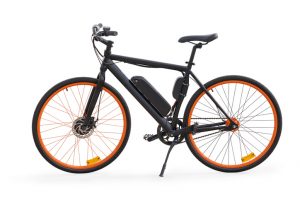 New York City, long a holdout against e-bikes and e-scooters, this week legalized the mobility devices in response to the COVID-19 crisis. Delivery workers using the motorized devices have, until now, faced fines and having their rides confiscated, but lawmakers said e-bikes and scooters will help those people keep working at a time when they’re needed.
New York City, long a holdout against e-bikes and e-scooters, this week legalized the mobility devices in response to the COVID-19 crisis. Delivery workers using the motorized devices have, until now, faced fines and having their rides confiscated, but lawmakers said e-bikes and scooters will help those people keep working at a time when they’re needed. By Scott C. Bauman, CAPP
By Scott C. Bauman, CAPP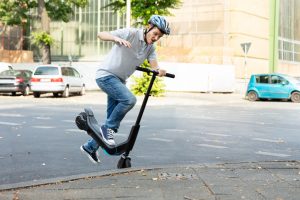 In cities and on campuses around the world, e-scooters seemed to have revolutionized short-distance personal transportation. Some days, it feels like they’re everywhere. And headlines trumpet the potential dangers for riders, pedestrians, and drivers as the micro-mobility vehicles grow in popularity. It all brings up an interesting question: If someone rents an e-scooter and has an accident, who’s liable? And do you need insurance for e-scooters if your operation offers them?
In cities and on campuses around the world, e-scooters seemed to have revolutionized short-distance personal transportation. Some days, it feels like they’re everywhere. And headlines trumpet the potential dangers for riders, pedestrians, and drivers as the micro-mobility vehicles grow in popularity. It all brings up an interesting question: If someone rents an e-scooter and has an accident, who’s liable? And do you need insurance for e-scooters if your operation offers them?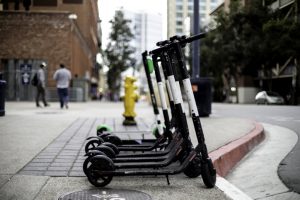 By Nathan Donnell
By Nathan Donnell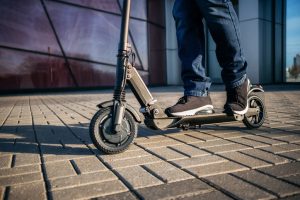 By L. Dennis Burns, CAPP
By L. Dennis Burns, CAPP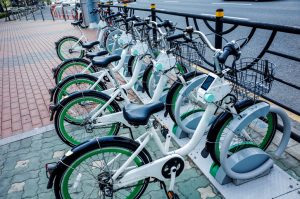 That might have been fast: About a year after dockless bike-share started making headlines, many cities and suppliers are moving away from them, shifting their fleets to dockless e-bikes or scooters instead.
That might have been fast: About a year after dockless bike-share started making headlines, many cities and suppliers are moving away from them, shifting their fleets to dockless e-bikes or scooters instead. E-scooters pose an issue in many cities but perhaps none like New York, where they’re too slow for the street and too fast for pedestrian-packed sidewalks. The city is contemplating how to legalize the popular, often shared machines and there’s a new call for a scooter speed limit downtown.
E-scooters pose an issue in many cities but perhaps none like New York, where they’re too slow for the street and too fast for pedestrian-packed sidewalks. The city is contemplating how to legalize the popular, often shared machines and there’s a new call for a scooter speed limit downtown.